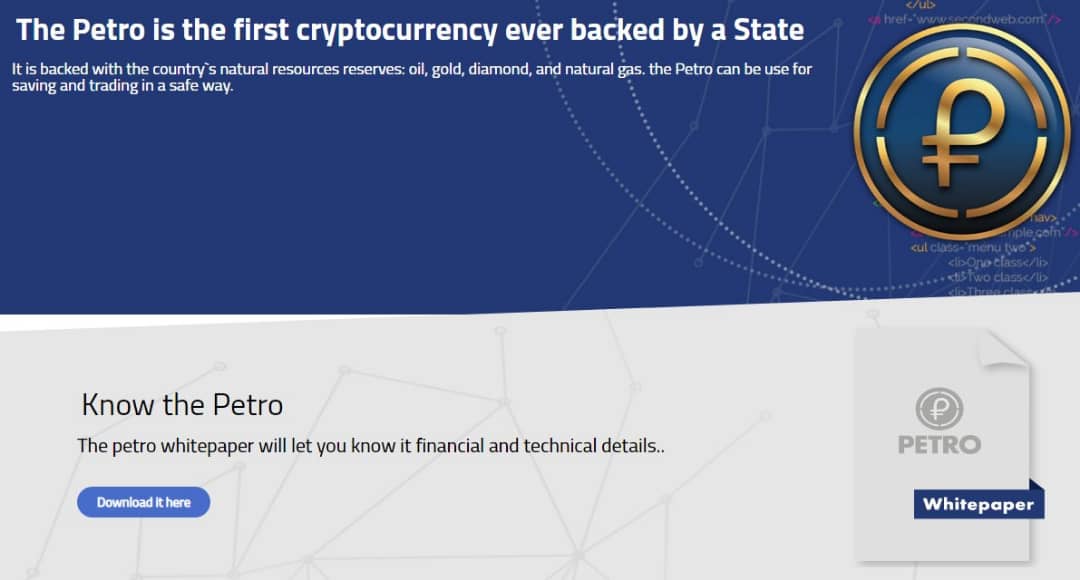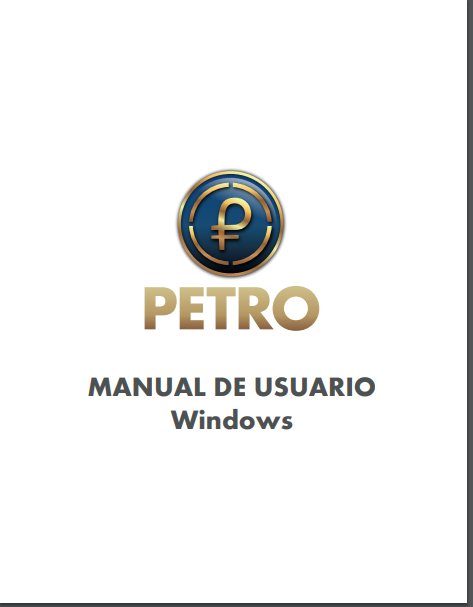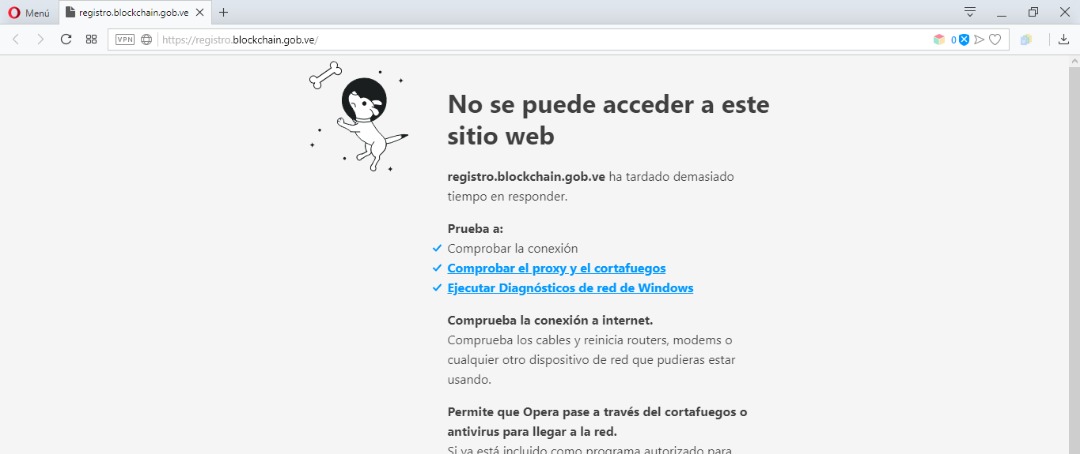The Petro Was Officially Launched… Again
You might have read this in February, as the petro was supposed to be launched in February. Maduro even hit a symbolical “on” switch pressing enter last week. And still… cue crickets.


The petro is here (it isn’t). Last Monday, Maduro went on another of his mandatory broadcasts, a cadena, for the launch of the petro, their not-so-new State backed cryptocurrency.
If you are having a déjà vu, it’s probably because you remember the other launch back in February. But that was just the presale where they presented a project, the whitepaper (or the seven versions of it), and started selling tokens. These tokens would be exchanged in the future for real petros once the platform was up and running.
We are in that future now. So… where are them Petros? Where’s the operational platform that was promised?
First, let’s look at the webpage:
 Nice English!
Nice English!
Before we use the petro, we need to install a wallet. Simple enough, so let’s try that!
But, against all odds: the Wallet is literally an empty folder with the word “wallet” on it.
Maybe the manual can help us?
 A single page with the word manual on it.
A single page with the word manual on it.
Let’s do something else then, let’s check the blockchain explorer, the place where we can see all of the transactions in petro happening right now in an open and transparent way.
Alright, so: the pages, specially the English version, are a scorching hot mess. But the failure of the launch goes beyond a hastily put together webpage.
First of all, the Whitepaper (the document that contains the whole concept and goal of the project) is not supposed to change, because it shows unclarity and development chaos. But, guess what? They have changed the Whitepaper, A LOT.
They changed the formula to calculate the price of the petro and they changed the (absurd) concept that backs it. We all thought that the petro would be backed only by oil, I mean, that’s what they’ve been saying it for months, right?
But not anymore. According to the Whitepaper: “Any economy would greatly suffer if its currency experimented oscillations as great as the ones experienced by the price of oil today.” In short: they found out that their stupid idea was moronic indeed, so they added more commodities to the mix, specifically gold, iron and diamonds, to make the currency more stable. It will still be sold at $60, but oil prices will affect only 50% of that value. And the other 50% will be affected by the prices of the other three commodities. But don’t be fooled, this doesn’t mean that you will be able to trade petro by diamonds now. The commodities that back the petro are only used to magically transfer their values to it, but that’s it.
Now remember, this is the price they will try to sell the petro for, not the price of the real market because, spoiler alert, the petro is unbuyable and undetectable within any blockchain, not trusted and not decentralized. There’s no real market for it.
The other radical change in the Whitepaper is the technology. Before, they said that the petro would run on the Ethereum platform, then they changed it to NEM. Then, literally on the launch date, they said that they had created their own blockchain, and that they are running it off of it (which thanks to open software is easier to deploy than it sounds, by the way).
They have changed strategy three times in less than a year. They clearly know what they are doing, we can trust them, guys, fear not.
In the last page of their hastily put together Whitepaper, they have this diagram of how the blockchain works, and as reddit users have pointed out, it’s taken directly from the development documentation of the cryptocurrency Dash.
 Just copy and paste. The boss won’t notice.
Just copy and paste. The boss won’t notice.
Now, the important part: when will I get my sweet, sweet petros?
Short answer, never. Long answer: ven para darte una cachetada.
Maduro said that the petro would now be traded on the six most important exchange platforms in the world. He didn’t say which ones, but according to this list those would be Binance, ZB.com, OKEx, Huobi and Bithumb.
I checked all six, the petro is not there.
He even showed a laptop where he symbolically turned on the petro blockchain by pressing enter. It’s been a week since that countdown has reached 0, and we’re still waiting for anything to happen. Also, the official webpage has been down ever since.
Maduro assured that Venezuelans will be able to exchange petros for bolivars in September.
Let’s wait for another cadena, another launch, another Whitepaper, another team of developers.
Let’s wait and see, I’ll start looking for popcorn.
This piece is part of our #omichronicles series, click here to join the rebellion.
Caracas Chronicles is 100% reader-supported.
We’ve been able to hang on for 22 years in one of the craziest media landscapes in the world. We’ve seen different media outlets in Venezuela (and abroad) closing shop, something we’re looking to avoid at all costs. Your collaboration goes a long way in helping us weather the storm.
Donate






